Then and now: Incredible images of the world's most beautiful train stations
Journeys through time

Sean Pavone/Shutterstock | The History Collection/Alamy
The advent of train travel in the 19th century saw cities across the world build magnificent stations to send travellers on their way and greet them when they arrived. But as the demands of train travel changed over the following decades, so too did many of these stations. One constant remained: their stunning architecture showcasing styles and eras from every corner of the globe.
See the fascinating then-and-now images showing how the world’s most beautiful stations have moved with the times...
Then: Luz Station, São Paulo, Brazil
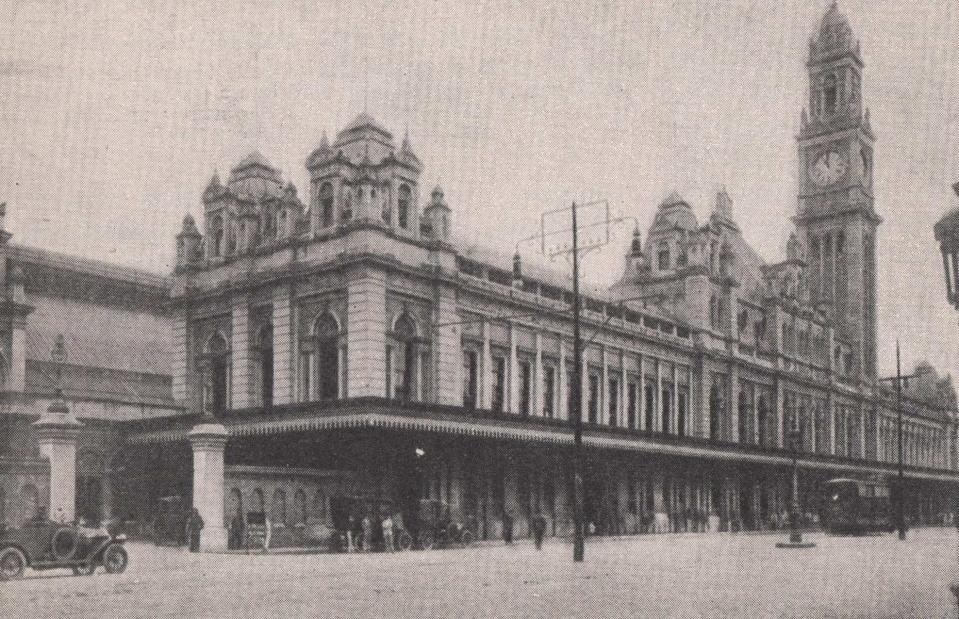
Antiqua Print Gallery/Alamy
Luz Station, seen here in 1923, is a curiously British addition to the bustling Brazilian city of São Paulo. Built by the English architect Charles Henry Driver in 1901, its style references London's Westminster Abbey and Big Ben. The central clock tower is a phenomenal 171 feet (52m) high and the clock itself is almost 10 feet (3m) across, so it can be seen from hundreds of metres away. The building was badly damaged by a fire in 1946 but was restored and expanded between 1947 and 1951, when a new platform was added for metropolitan trains.
Now: Luz Station, São Paulo, Brazil
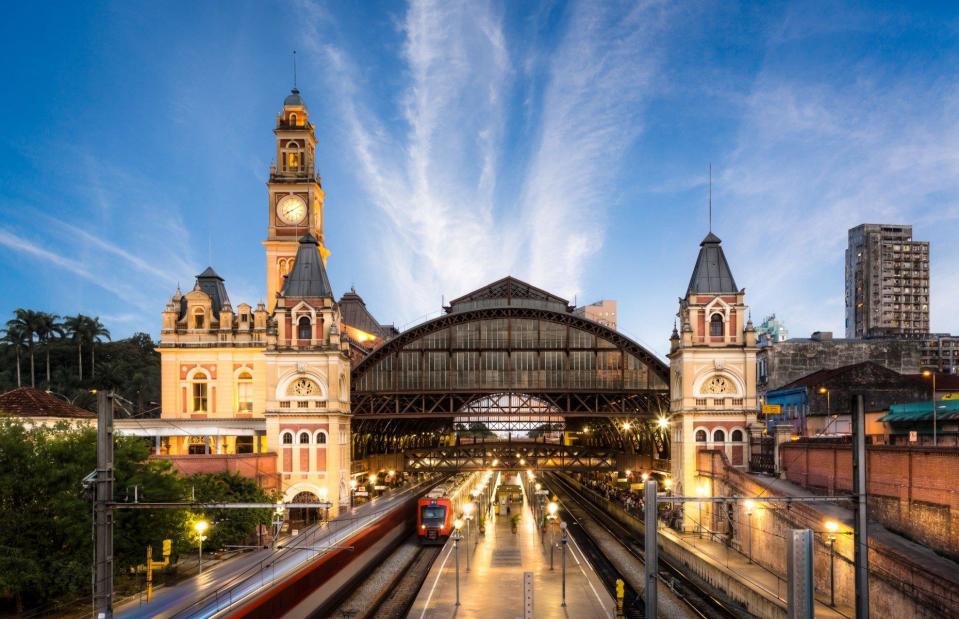
Thiago Leite/Shutterstock
Today, Luz Station remains a major landmark and key transport hub for the city. Since 2006 it has also been home to the Museum of Portuguese Language, for which parts of the building were repurposed by the architect Paulo Mendes da Rocha and his son Pedro. When the building was again damaged by fire in 2015 the same pair were involved in the restoration, which took place between 2016 and 2020. During this period the English clock that had been destroyed in the 1946 fire was replaced by a Brazilian Michelini model.
Then: Flinders Street Station, Melbourne, Victoria, Australia
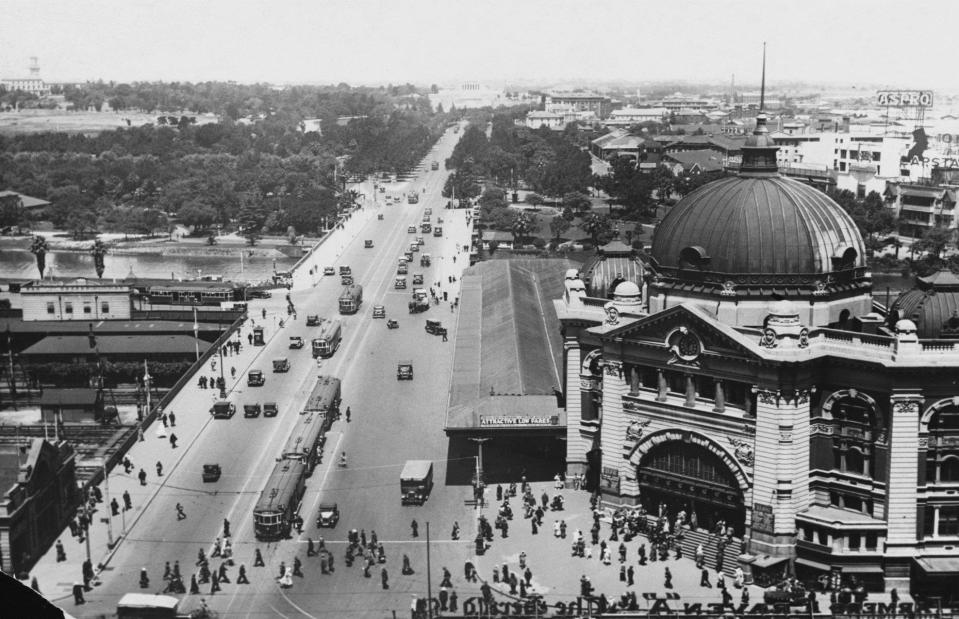
Hulton Deutsch/Getty Images
Flinders Street Station is the oldest train station in Australia and a terminus has existed on the site since the 1850s. The current building, completed in 1910 and shown here in the early 20th century, boasts a showstopping design with a yellow façade and a green copper dome. There’s a popular urban myth that the firm that won the contract to build it sent over plans for a train station in Mumbai by mistake, which explains why there is an Indian touch to the design.
Now: Flinders Street Station, Melbourne, Victoria, Australia
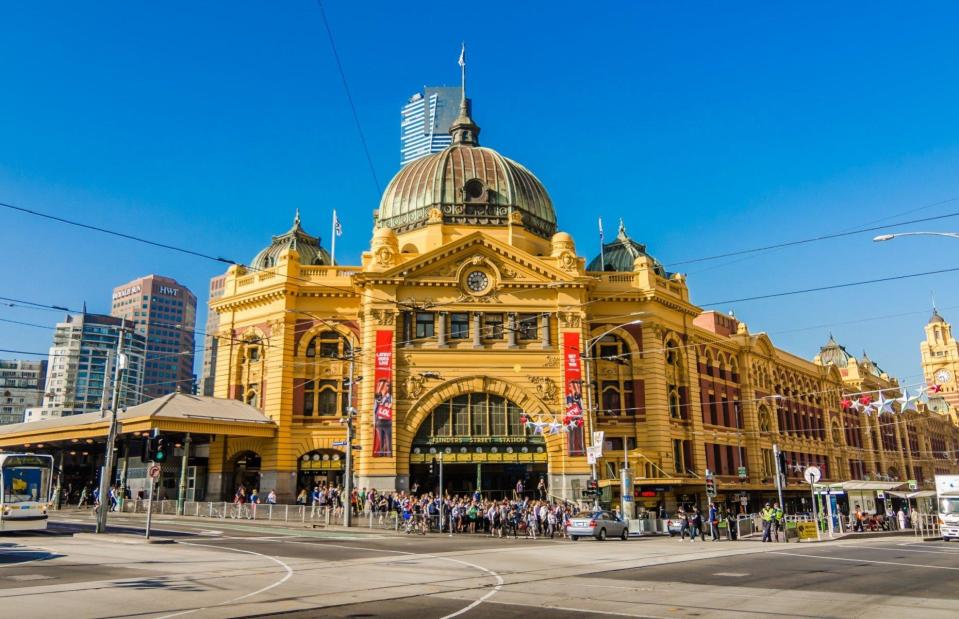
Boyloso/Shutterstock
Today, Flinders Street Station is one of the busiest suburban train stations in the southern hemisphere, with over 1,500 trains and 110,000 commuters passing through each day. Its central location makes it a popular meeting point for locals, who congregate under the row of clocks that hang above the main entrance or on the steps leading up to them. The steps are such a popular meeting place that heating was installed to keep those sitting on them warm in winter.
Then: Chhatrapati Shivaji Maharaj Terminus, Mumbai, India
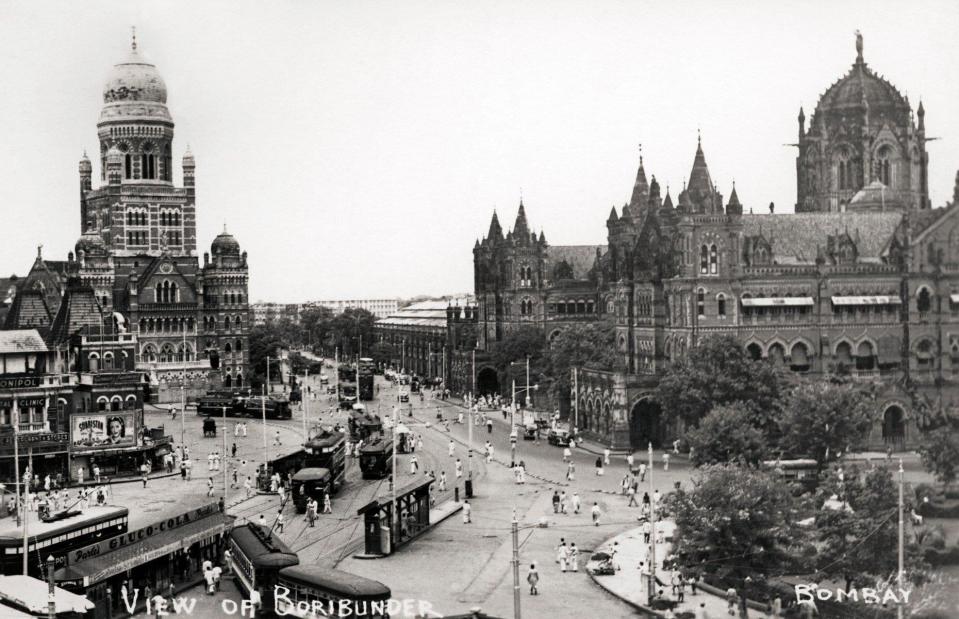
Dinodia Photos/Alamy
The Chhatrapati Shivaji Maharaj Terminus in Mumbai, seen here in the early 20th century, was originally known as the Victoria Terminus. It remains an eye-opening example of cultural fusion as British architects and Indian craftsmen worked to create a new style unique to the city. Designed by the British architect FW Stevens and built between 1878 and 1887, it blends Victorian Gothic-Revival style with traditional Indian elements.
Now: Chhatrapati Shivaji Maharaj Terminus, Mumbai, India
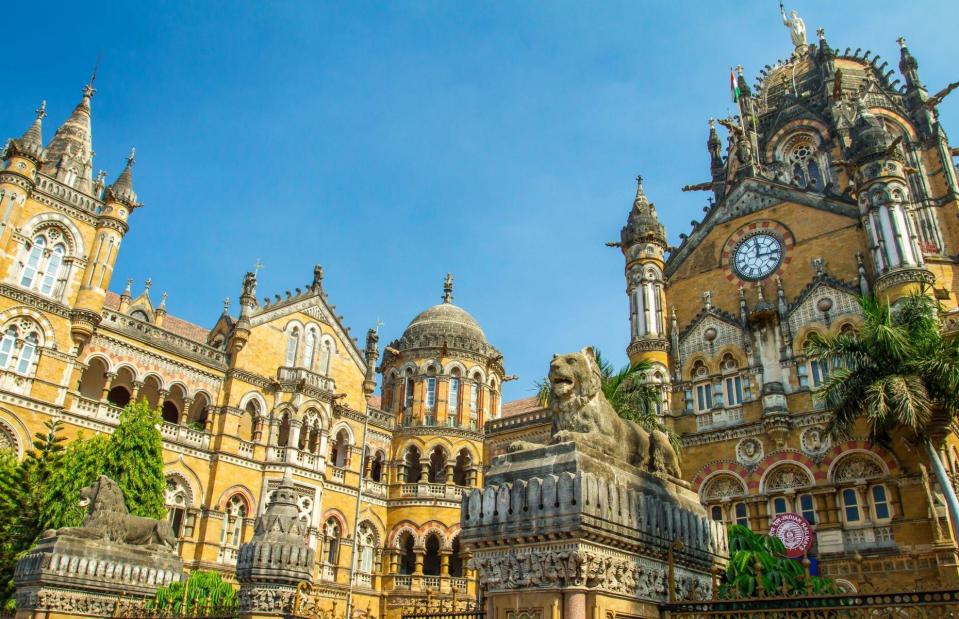
Mazur Travel/Shutterstock
Today, Chhatrapati Shivaji Maharaj Terminus is Mumbai’s main commuter hub and is used by an astonishing three million commuters daily. It was renamed Chhatrapati Shivaji Terminus in 1996 as a tribute to the 17th-century Indian king – part of a national policy of replacing names from the British Empire with Indian names. 'Maharaj' was added in 2017, and in 2004 it was designated a UNESCO World Heritage Site.
Then: St Pancras International, London, England, UK
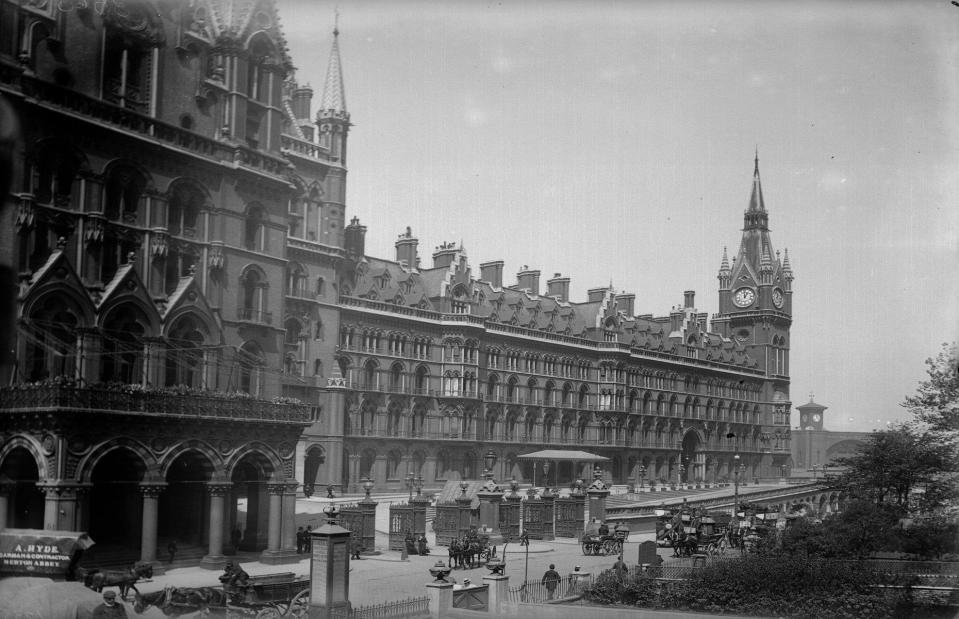
Reinhold Thiele/Getty Images
St Pancras Station opened in 1868 and, together with the former Midland Grand Hotel, which opened in 1876 and forms the frontispiece of the building, is considered a masterpiece of Victorian-Gothic architecture. Pictured here in the early 20th century, it served the practical purpose of connecting London with cities across the land, but was also designed to impress and act as a showcase for the ironwork, brickwork and manufacturing prowess of England's Midlands. All the materials used to construct the station originated in that region.
Now: St Pancras International, London, England, UK
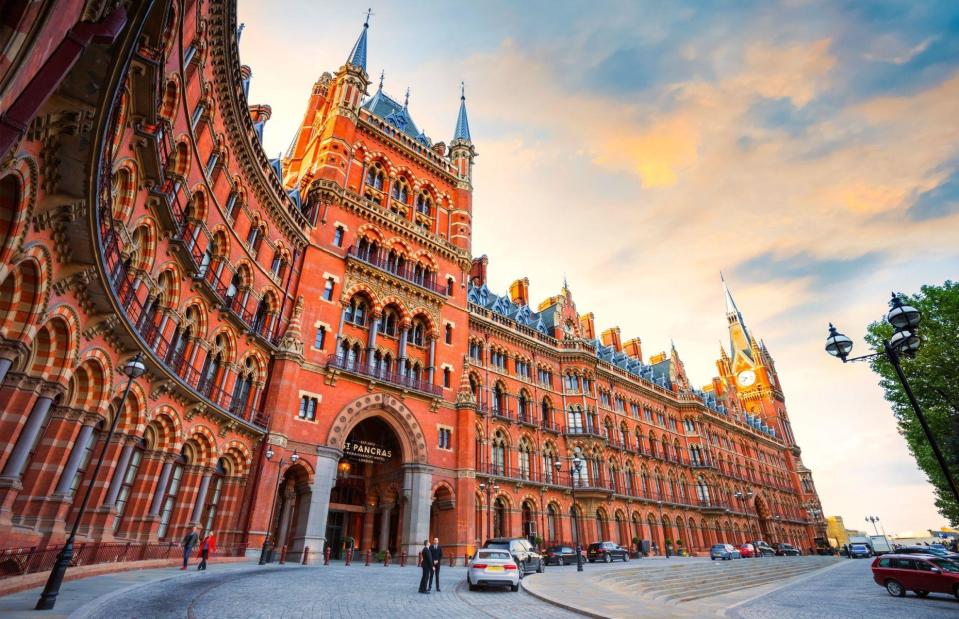
cowardlion/Shutterstock
Both station and hotel were threatened with demolition in the 1960s, but they were fortunately saved by a campaign led by the poet Sir John Betjeman and the Victorian Society. The station underwent a major redevelopment and was reopened by Queen Elizabeth II in 2007 as St Pancras International, providing services across the UK and to Europe via the Eurostar. The hotel was also lavishly restored, opening as the St Pancras Renaissance Hotel London in 2011.
Then: Antwerpen-Centraal, Antwerp, Belgium

The History Collection/Alamy
Locals refer to Antwerp’s Centraal Station as a 'railway cathedral', and looking at this image from the 1920s it is easy to see why. The magnificent stone-clad building with its imposing dome was designed by Louis Delacenserie and opened in 1905. Delacenserie was influenced by the Pantheon in Rome, among other things, and laid out the building in a unique style that he referred to as 'Baroque-medieval-eclecticism'. The station was made a protected monument in 1975.
Now: Antwerpen-Centraal, Antwerp, Belgium
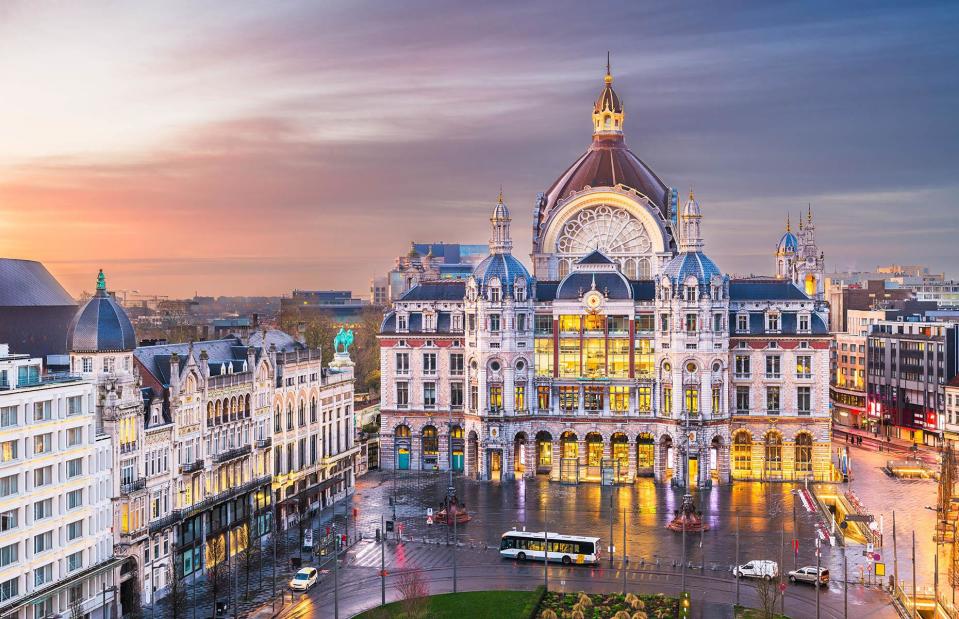
Sean Pavone/Shutterstock
Today, Centraal Station is regularly voted one of the most beautiful stations in the world, appreciated for its wonderfully diverse design. The writer WG Sebald even chose to demonstrate the brilliance of an architectural historian in his novel Austerlitz by having him recognise the full range of architectural styles within the building. Although the station appears remarkably unchanged, it has in fact undergone major subterranean renovations to convert it from a terminus into a through station.
Then: Grand Central Station, New York City, New York, USA
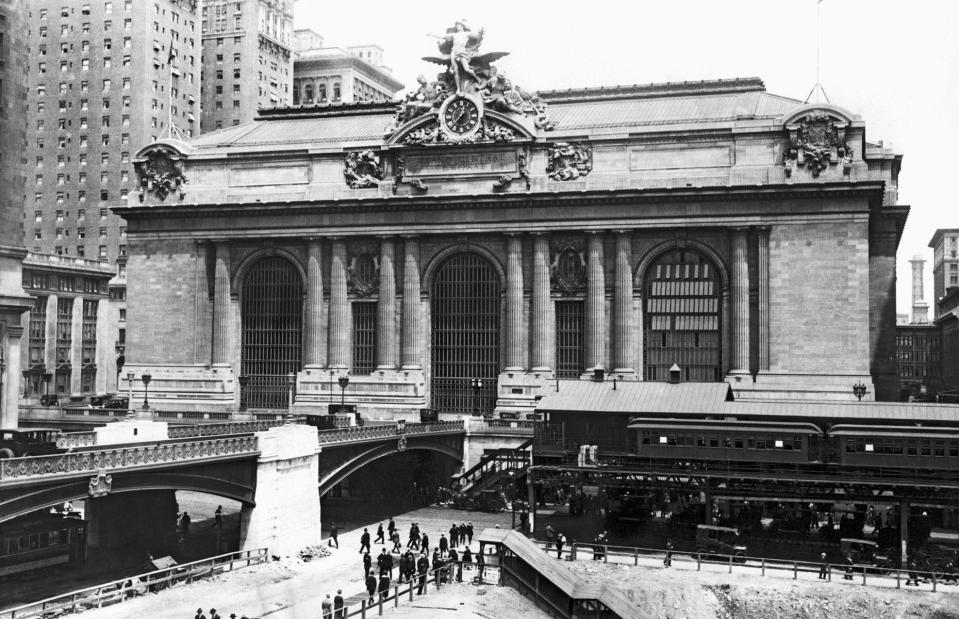
Underwood Archives/Getty Images
Grand Central Terminal opened to great fanfare just after midnight on Sunday 2 February 1913, even though construction wasn’t entirely finished. It attracted more than 150,000 visitors on opening day and soon became the busiest station in the US. In the 1960s it was threatened by plans to build a 55-storey tower atop its structure, which would have caused irrevocable damage. It was eventually saved by a lengthy court battle and a campaign spearheaded by former first lady Jacqueline Kennedy Onassis. Seen here in 1924, the station was eventually named a National Historic Landmark in 1976.
Now: Grand Central Station, New York City, New York, USA
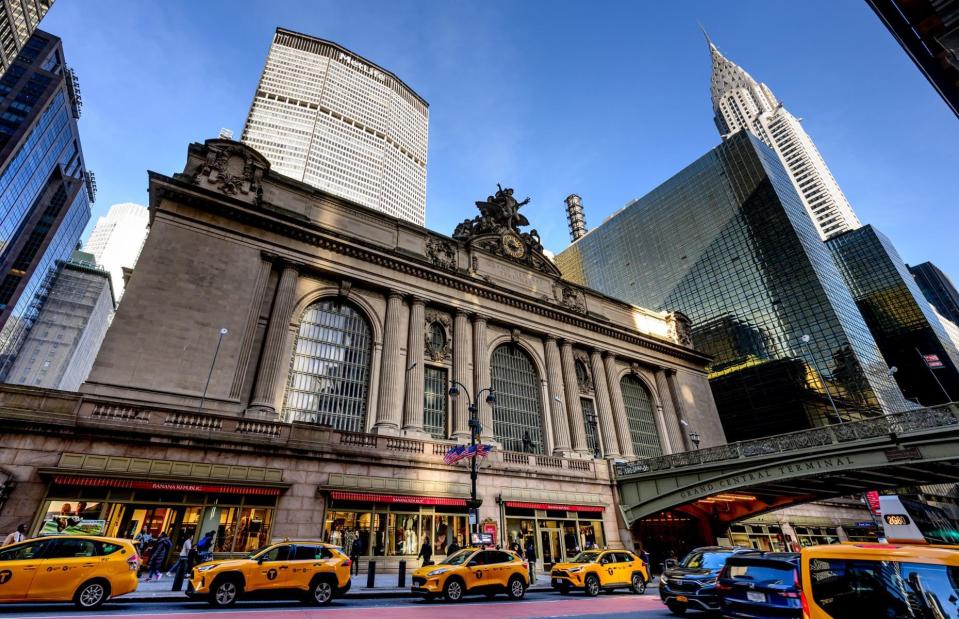
Roy Rochlin/Getty Images
Taken a century later, in March 2024, this image shows that Grand Central Station continues to pack an architectural punch despite being dwarfed by the buildings surrounding it. The station was meticulously renovated throughout the late 1980s and 1990s with modern facilities added and decades of grime removed. Blessed with an interior as awe-inspiring as its exterior, including its stunning Main Concourse, the station is one of New York’s most visited attractions, second only to Times Square.
Then: Istanbul Sirkeci Terminal, Istanbul, Turkey
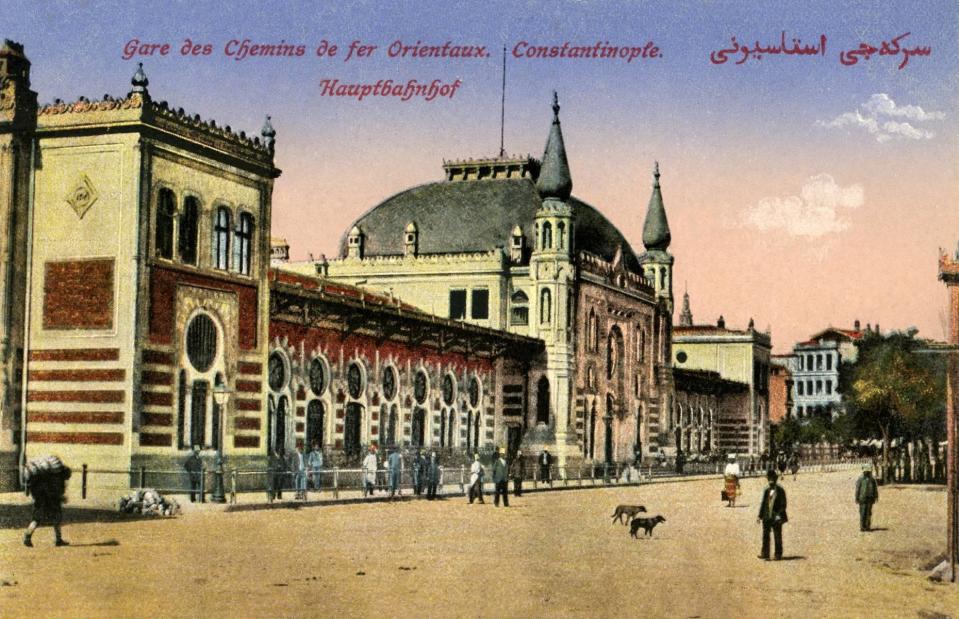
Culture Club/Bridgeman/Getty Images
Istanbul’s Sirkeci Terminal, seen here in a colourised photo in around 1900, was designed by the German architect August Jasmund with a mix of Art Nouveau and Oriental styles, and is considered one of the finest examples of European Orientalism. Opened in 1890, the station is famous for being the eastern terminus of the famously luxurious Orient Express, which ran between Paris and Istanbul until 1977. In the 1950s and 1960s the restaurant was a popular meeting place for globe-trotting journalists, writers and diplomats.
Now: Istanbul Sirkeci Terminal, Istanbul, Turkey

Volodymyr Dvornyk/Alamy
Sirkeci Terminal's architecture still has the power to dazzle, but today only domestic trains call at the station. In February 2024 a new light rail connecting Kazlicesme and Sirkeci was opened by President Recep Tayyip Erdogan. Since 2005 the station has also been home to the Istanbul Railway Museum, with displays primarily linked to the glory days when the Orient Express terminated here.
Then: Gare d'Orsay, Paris, France
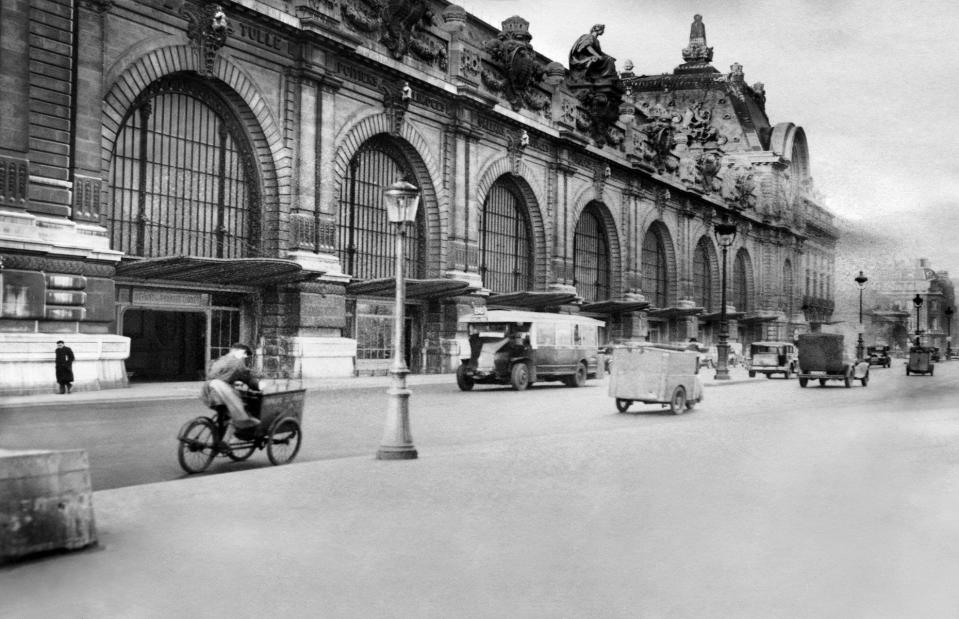
AFP/Getty Images
Occupying the site of the former Palais d'Orsay in central Paris, the Gare d'Orsay opened just in time for the 1900 Paris Exposition. Unfortunately, the station’s magnificent location turned out to be a drawback as it allowed no room for expansion. Long-distance services were terminated in 1939, shortly after this image was taken, and the station gradually fell into disuse. Though it lay abandoned it remained an imposing space, serving as a location for films like Orson Welles' 1962 adaptation of Franz Kafka’s The Trial.
Now: Musee d'Orsay, Paris, France
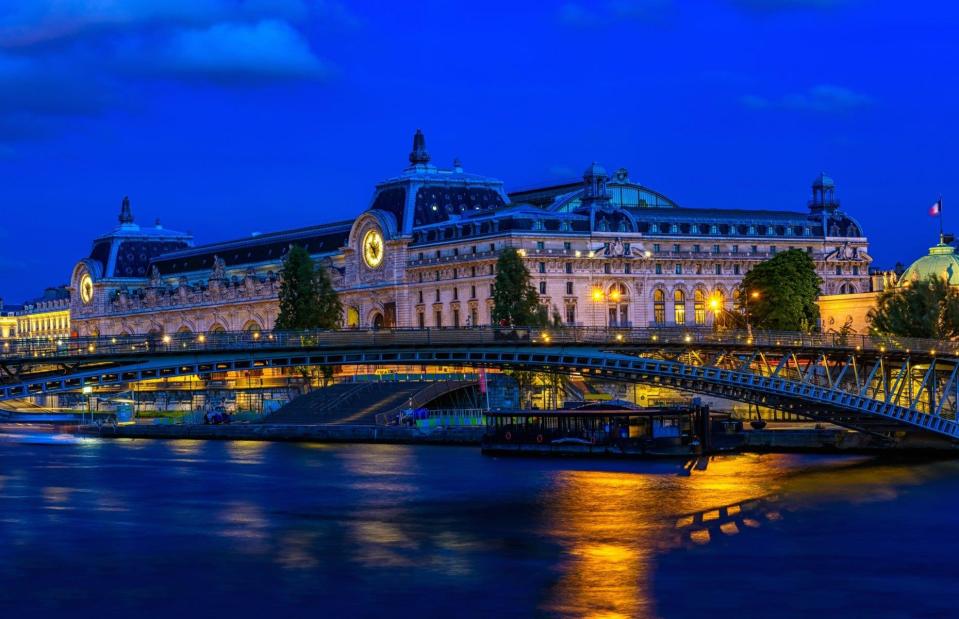
Catarina Belova/Shutterstock
After narrowly avoiding demolition in the 1960s, the station was declared a historic monument in 1978 and reopened triumphantly as the Musee d'Orsay in 1986, after a hefty restoration. The elaborate Beaux-Arts façade survived intact, while the interior was transformed into a series of cavernous gallery spaces. Echoing its former use, the vast train shed is now the museum’s grand hall. The old station clock still looks down from above, while the old railway hotel houses the main paintings collection.
Then: Salzburg Hauptbahnhof, Salzburg, Austria

The Picture Art Collection/Alamy
The Salzburg Hauptbahnhof, seen here in an 1870 watercolour by artist Franz Heinrich, was completed in 1860, and played a vital role in connecting Salzburg to the international railway network. This palatial building hosted just two tracks – one in each direction, either side of a solitary platform. The station was badly damaged during World War II but parts of it, including the grand Marble Hall, were reconstructed afterwards.
Now: Salzburg Hauptbahnhof, Salzburg, Austria
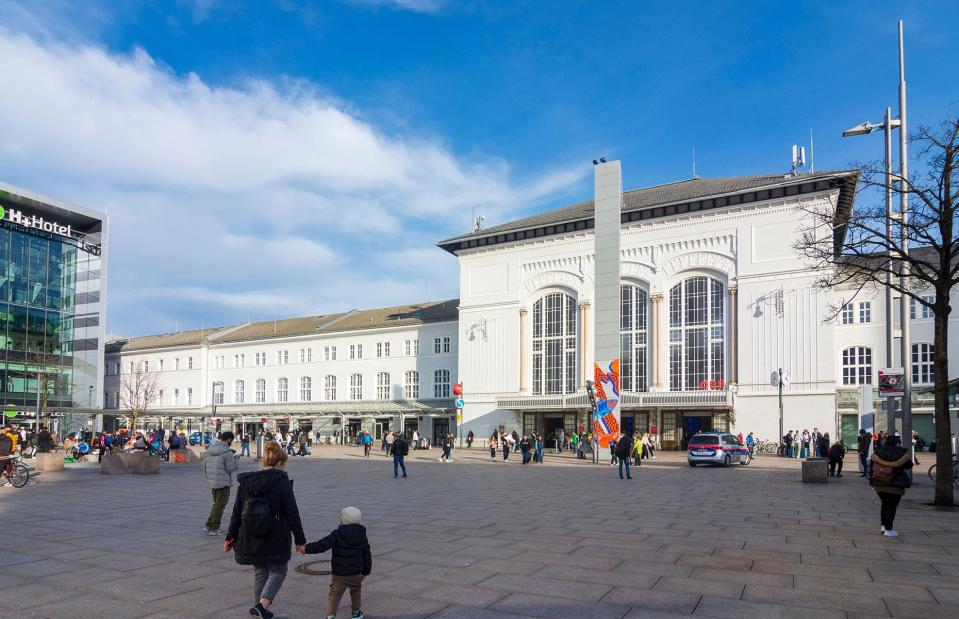
mauritius images GmbH/Alamy
A clear need for increased capacity meant that the station underwent major renovations between 2009 and 2014, resulting in extra platforms and a new shopping centre. Fortunately the station’s imposing façade and many of its historic elements – such as the steel structure of the central platform and the reception hall – were preserved. However, the rebuilt Marble Hall had to be dismantled and was rebuilt once again as one of the five large halls of the Augustiner Brau Mulln – an equally historic local brewery.
Then: Union Station, Toronto, Ontario, Canada
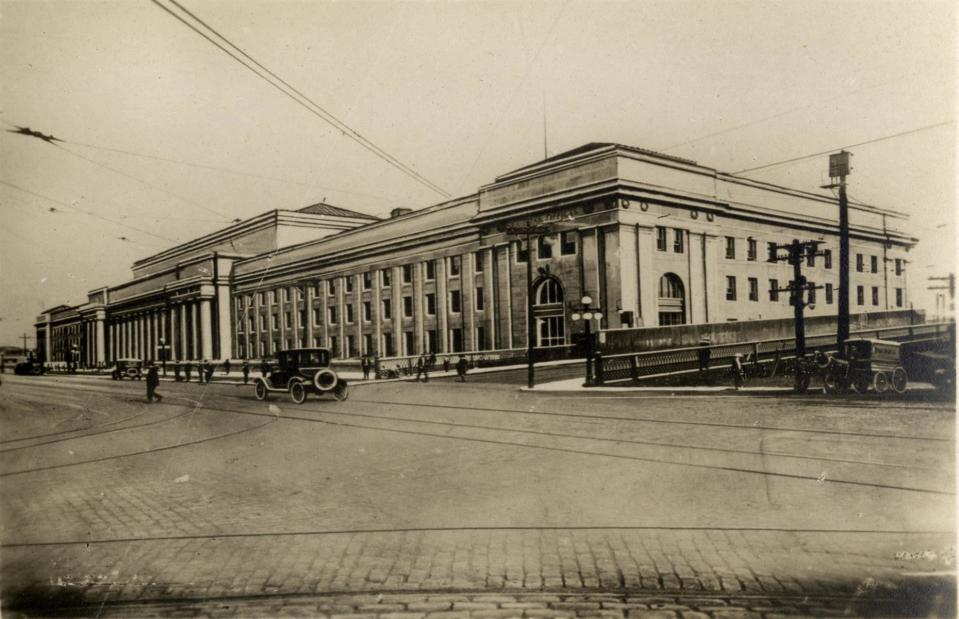
History and Art Collection/Alamy
Union Station, pictured here around the time of its opening in 1927, was built as part of the City Beautiful movement – a North American social movement intended to promote architectural excellence. Construction began in 1914, but a materials shortage caused by World War I led to major delays. The five-storey building is considered to be Canada’s finest example of Beaux-Arts railway architecture. It certainly impressed Britain's Prince of Wales, who declared, "You build your stations like we build our cathedrals", at its opening ceremony.
Now: Union Station, Toronto, Ontario, Canada
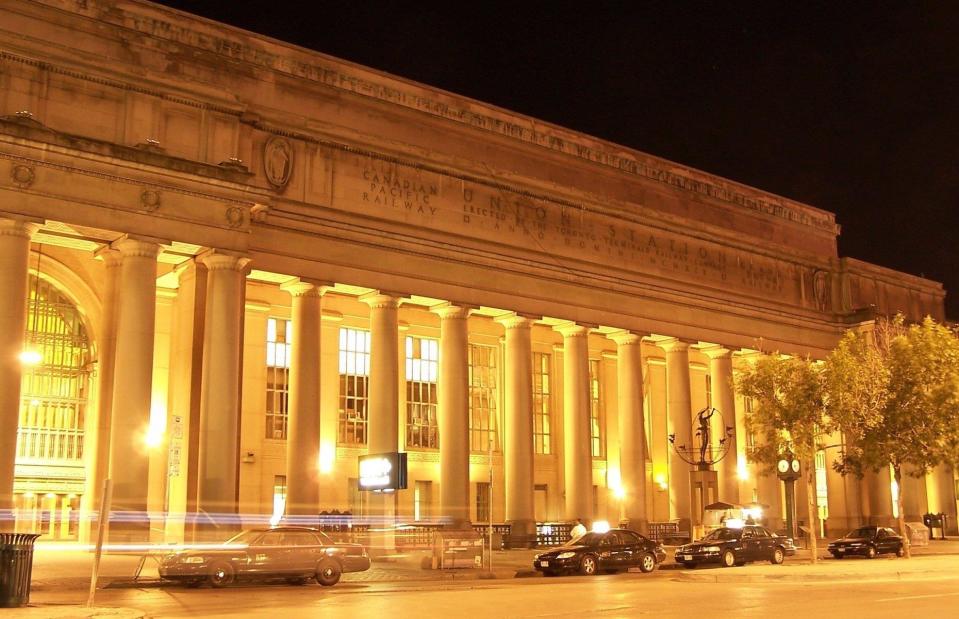
Diego Silvestre/Shutterstock
The station's stunning exterior remains untouched, although the interior has undergone extensive renovation to adapt to modern needs. Over 300,000 people commute through the station every day, while it also promotes community connection via its free year-round arts programme. It showcases Toronto’s cultural scene by hosting public dance, art and music events and celebrating creativity and inclusion.
Then: Union Station, Los Angeles, California, USA
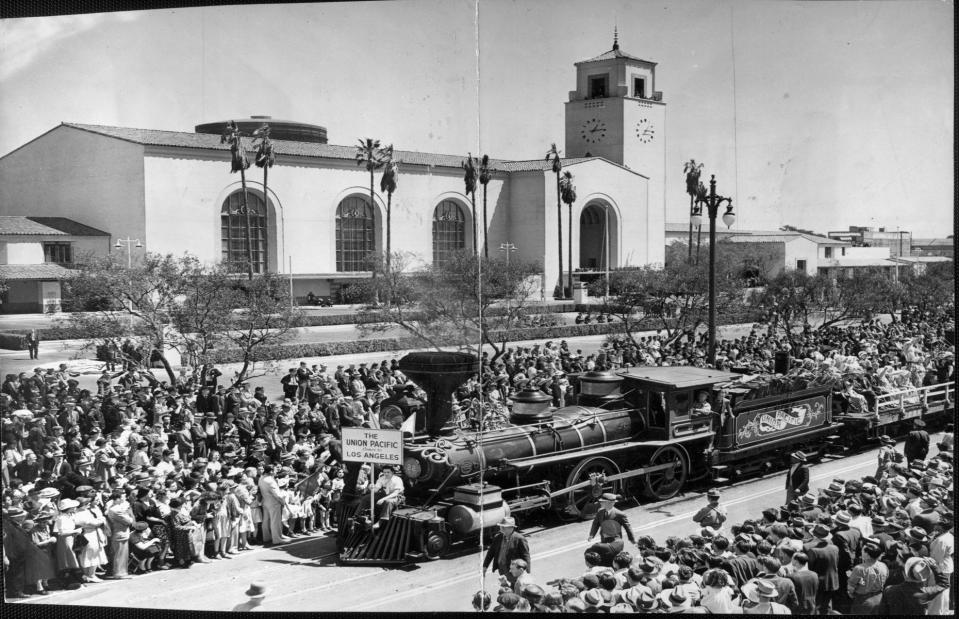
University of Southern California/Getty Images
Union Station in Los Angeles is often called 'the last of the great train stations'. It was designed by the father and son architect team John and Donald Parkinson with an innovative mix of Spanish-Colonial, Mission-Revival and Art-Deco styles, now commonly known as Mission Moderne. It is pictured here in 1939, the year it opened with a star-studded three-day celebration which was attended by an estimated half a million Los Angeles residents.
Now: Union Station, Los Angeles, California, USA

Kit Leong/Shutterstock
Today the station is a beloved landmark that has remained largely unchanged over the decades. The largest railway terminal in the western United States, it is also a popular centre for arts and culture, and hosts a range of musical performances and art exhibitions throughout the year. Appropriately enough for a city built on showbusiness, the programme is designed to showcase the diversity of talent boasted by this storied metropolis.
Then: Centraal Station, Amsterdam, Netherlands
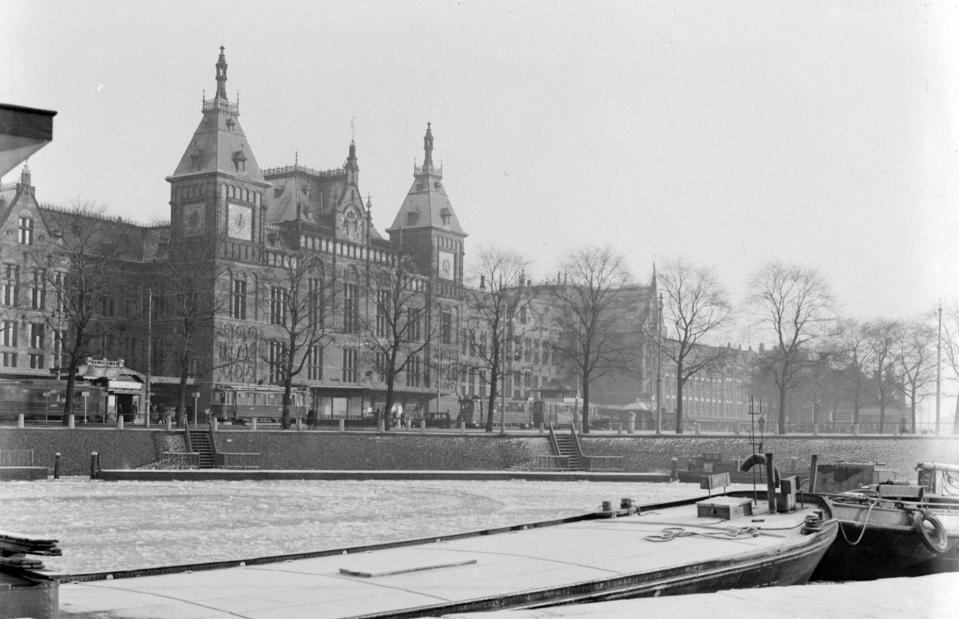
BNA Photographic/Alamy
Designed by Pierre Cuypers and officially opened in 1889, Amsterdam’s Centraal Station was a major feat of engineering. Built on the edge of the city’s harbour, it stands on three interconnected artificial islands and is supported by more than 8,000 wooden piles. Its grand façade, seen here in 1931, blends elements of Gothic and Renaissance-Revival styles, and mirrors the architecture of Cuypers' other great masterpiece, the Rijksmuseum, which had opened four years earlier.
Now: Centraal Station, Amsterdam, Netherlands
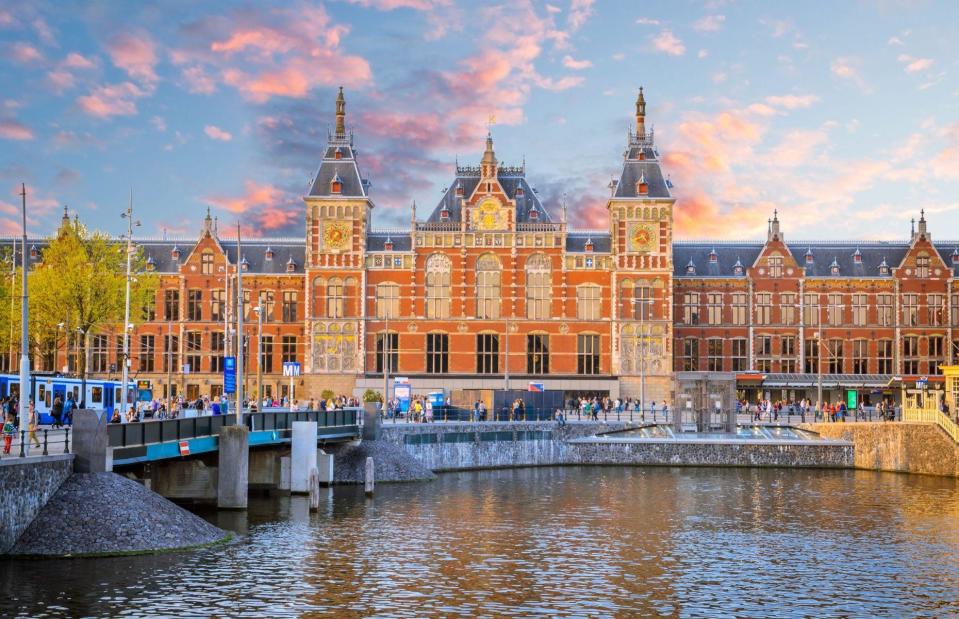
Olena Z/Shutterstock
Today, Centraal Station is used by almost 200,000 passengers daily, making it the most visited Rijksmonument (national heritage site) in the Netherlands. It also serves as a gateway to the north of the city, with its IJ ferry terminal delivering passengers to the area's hip restaurants, art galleries and cultural centres. If ferries aren't your thing, you can hop on the recently completed north to south metro.
Then: Zurich Hauptbahnhof, Zurich, Switzerland
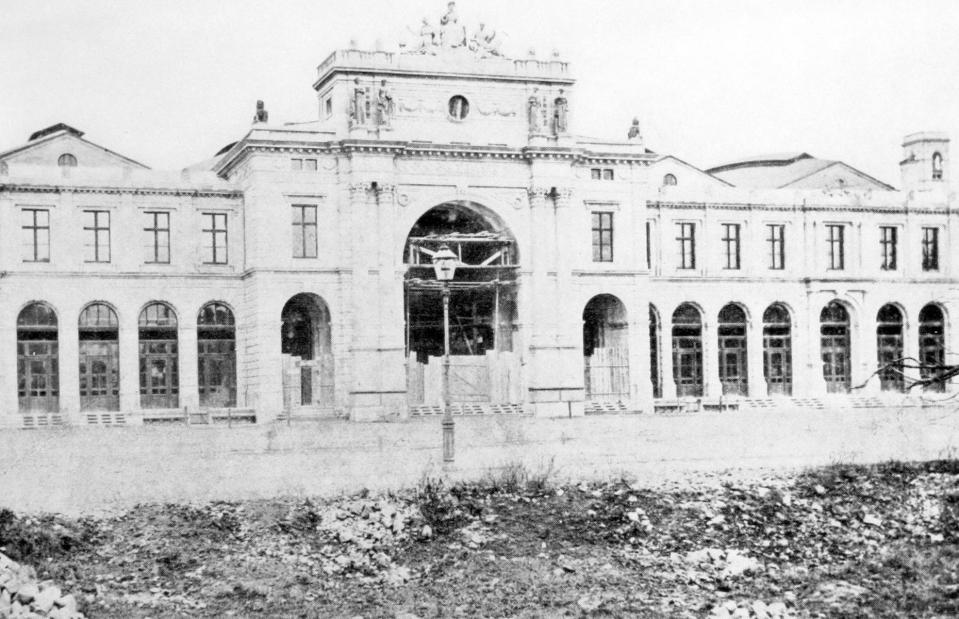
Volgi archive/Alamy
Zurich’s Hauptbahnhof is a stunning Neoclassical building completed in 1871 – the year this photograph was taken. It replaced Zurich’s first station, built in the 1840s, which soon proved too small to accommodate Switzerland’s rapidly expanding rail network. Designed by the architect Jakob Friedrich Wanner, its main entrance is a magnificent triumphal arch which faces Bahnhofstrasse – today one of the world's most expensive shopping streets. The interior features richly decorated lobbies, atriums, restaurants and halls.
Now: Zurich Hauptbahnhof, Zurich, Switzerland
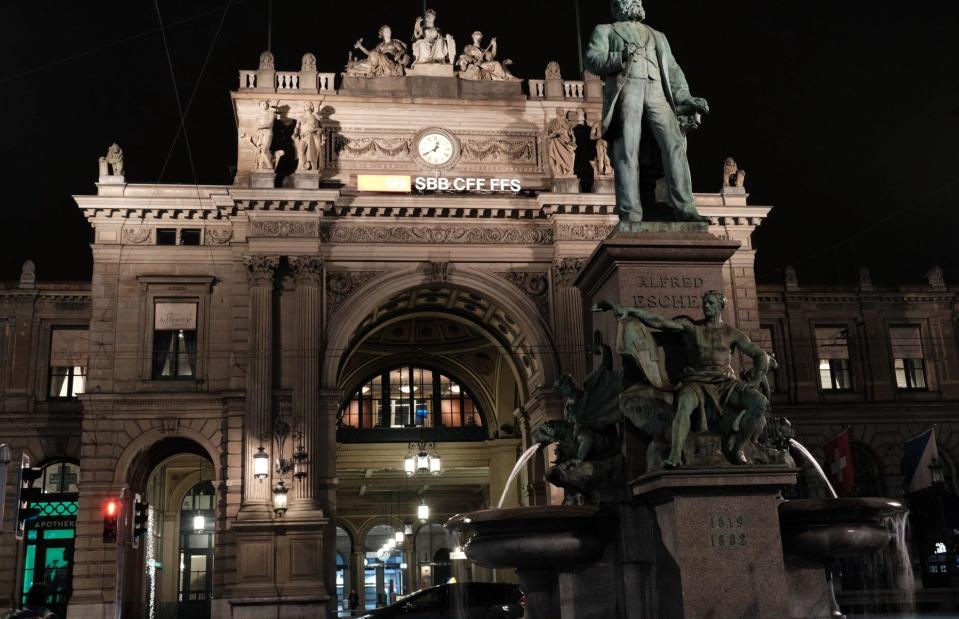
Roberti/Shutterstock
Today, Zurich’s Hauptbahnhof is as imposing as ever. It is still by far the busiest train station in Switzerland, and one of the busiest in Europe. Popular with commuters, it was ranked Europe’s best railway station by the Consumer Choice Center in 2023. The station is at the forefront of eco-friendly travel and is involved in multiple green initiatives, promoting public transport to reduce carbon emissions. It is also a vibrant cultural hub, hosting numerous events throughout the year including its famous Christmas market.
Then: Helsinki Central Station, Helsinki, Finland
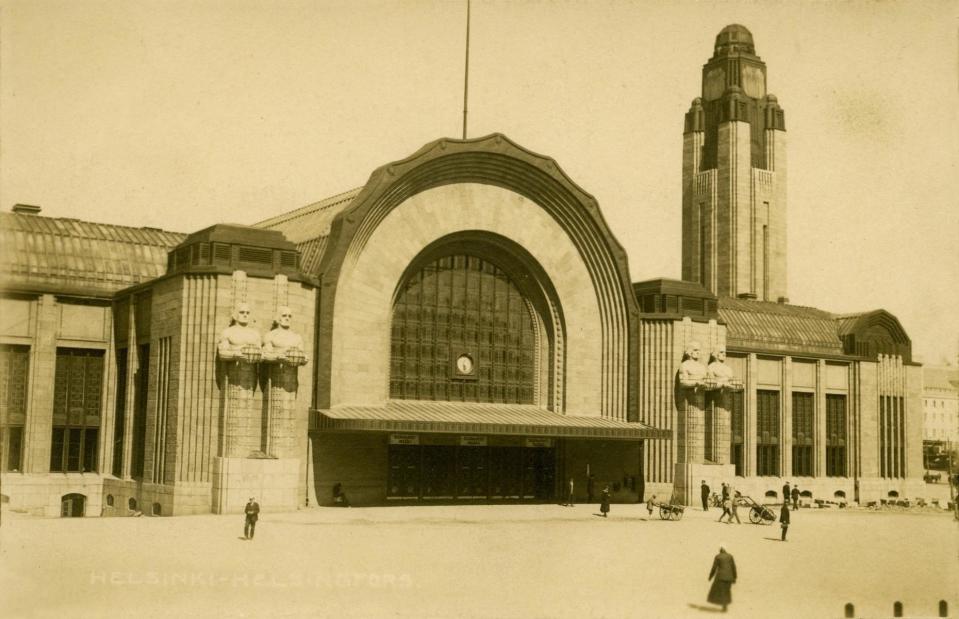
Culture Club/Getty Images
A stunning example of Finnish Art Nouveau, Helsinki’s main station was designed by Eliel Saarinen and opened in 1919. Although the clock tower is now one of Helsinki’s most famous landmarks, it was actually without clocks until 1922, as can be seen in this early photograph. The station's other most notable features are the Lyhdynkantajat ('the lantern bearers') – two pairs of statues by sculptor Emil Wikstrom that hold spherical lamps on either side of the main entrance.
Now: Helsinki Central Station, Helsinki, Finland
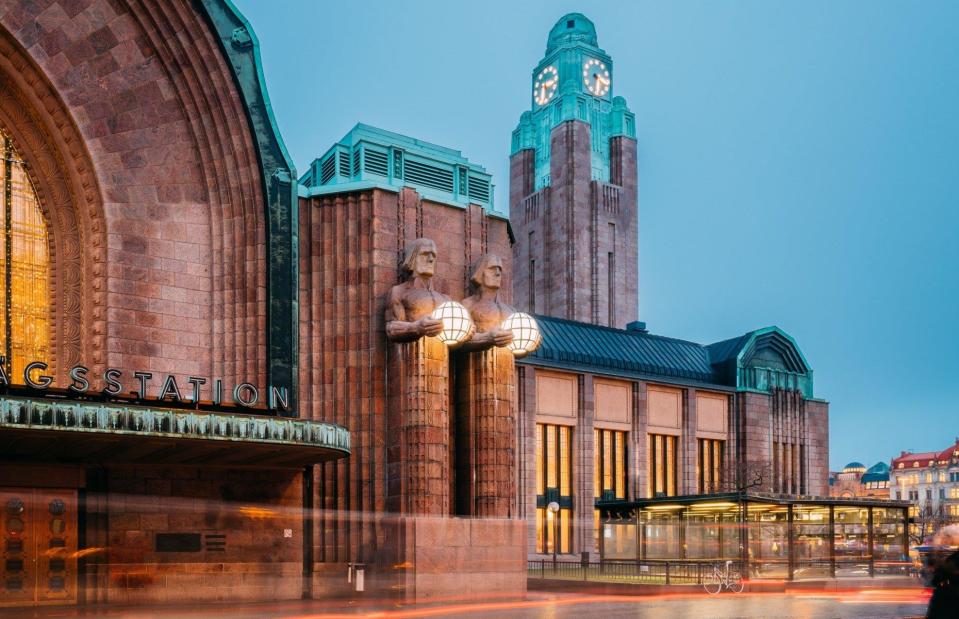
Grisha Bruev/Shutterstock
Today, the station is used by around 200,000 passengers daily, making it Finland’s most visited building. It's also estimated that 400,000 people use the station’s clock tower to check the time each day. The station’s old administrative buildings have been converted into a contemporary design hotel, the Scandic Grand Central, which incorporates various details influenced by Eliel Saarinen’s original plans.
Then: Bahnhof Uelzen, Uelzen, Germany

www.kdtroeger.de/Wikimedia Commons/Public domain
The train station at Uelzen in Lower Saxony was built in 1887 in Wilhelminian style – a grandiose Neo-Baroque style that takes its name from Wilhelm II, the last German Emperor and King of Prussia who abdicated in 1918. It is shown here in the early decades of the 20th century. During World War II it was badly damaged and later additions and renovations meant that the integrity of its original design was lost.
Now: Bahnhof Uelzen, Uelzen, Germany

Marc Venema/Shutterstock
Thanks to a highly original makeover at the hands of Austrian artist Friedensreich Hundertwasser, Uelzen Station has been transformed into a vibrant cultural venue which attracts tourists and locals alike. The project, which took place between 1999 and 2000, saw the original Wilhelminian façade re-exposed and embellished with columns decorated with Hundertwasser’s signature coloured tiles, which also appear on the ceiling inside. Shops and restaurants were added, and trees planted wherever possible to give the station a relaxed, organic feel.
Then: Madrid Atocha, Madrid, Spain

La Esfera/Wikimedia Commons/Public domain
Madrid Atocha began life as a mere wooden platform in the early 1850s. It was subsequently expanded in 1865 and 1892 when the spectacular roof over the central hall was created. Designed by the French engineer Henri de Saint-James it measures 499 feet (152m) long, 157 feet (48m) wide and 89 feet (27m) tall, and has since become one of the city’s most recognisable landmarks. This image shows the station in the early 20th century.
Now: Madrid Atocha, Madrid, Spain

fornStudio/Shutterstock
A major refurbishment carried out by Spanish architect Rafael Moneo between 1984 and 1992 transformed Madrid Atocha into two separate stations. A new building opened with connections to standard-speed trains, while the high-speed AVE hub can be found in the old part of the station now known as Puerta de Atocha. The station’s famous central hall was converted into a spectacular tropical garden filled with thousands of plants, rivalling the collection at Madrid’s Real Jardín Botánico.
Then: Milano Centrale, Milan, Italy

ARCHIVIO GBB/Alamy
The magnificent Milano Centrale opened in 1931, around the time this image was taken. Originally modelled after Union Station in Washington DC, the design was modified after Benito Mussolini came to power. Wanting the building to convey the power and bravado of his fascist regime, he expanded the Beaux Arts design to include elements of Art Nouveau and Art Deco. The results are certainly impressive, with 38,846 cubic feet (11,000 cubic metres) of white marble, a façade 286 feet (200m) wide and an arrival room with a 131-foot-high (40m) ceiling vault modelled after the ancient Baths of Caracalla.
Now: Milano Centrale, Milan, Italy

TY Lim/Shutterstock
Today, Milano Centrale is one of the busiest train stations in Italy and the country’s second-largest – only Rome’s Roma Termini is larger. Over 320,000 people pass through the station every day heading to cities throughout Italy and throughout Europe. Beautiful as ever, the station is a tourist destination in its own right and contains a wide array of shops, cafés and restaurants to keep visitors entertained in between marvelling at the stunning architecture.

